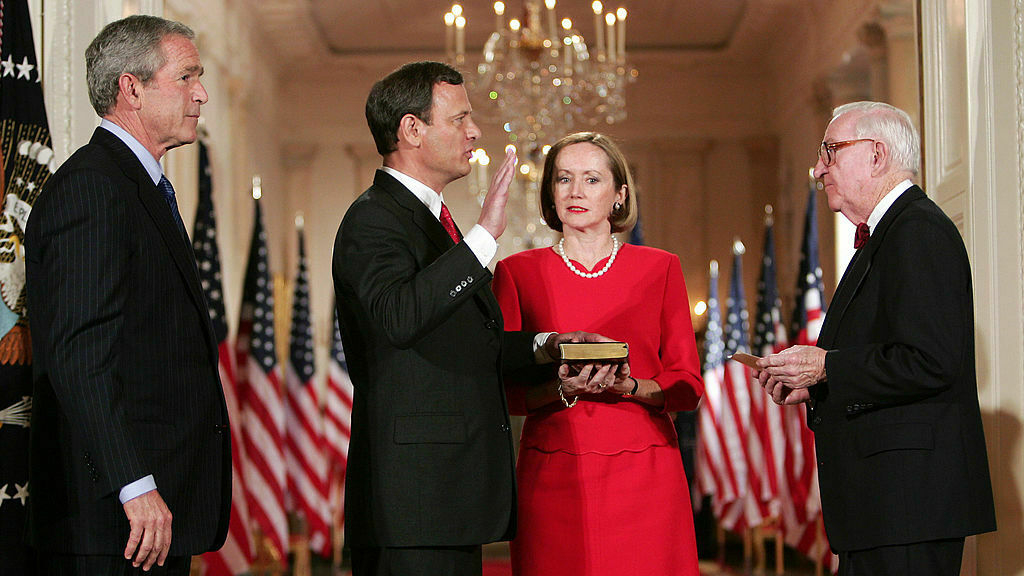
United States Supreme Court justices are pictured in October 2022: Sonia Sotomayor (front row from left), Clarence Thomas, Chief Justice John Roberts, Samuel Alito, and Associate Justice Elena Kagan; Amy Coney Barrett (back row from left), Neil Gorsuch, Brett Kavanaugh and Ketanji Brown Jackson.
Alex Wong/Getty Images
One year after they overturned the Roe v. Wade protection for abortion rights, the same six members of the U.S. Supreme Court have banned affirmative action — the explicit use of race as a factor in college admissions.
Designed to address centuries of inequality in education, affirmative action had been a feature of the past several decades and was upheld by multiple Supreme Court rulings over that period. Now, the court has denounced the practice as a form of racial discrimination that violates the 14th Amendment, which was itself enacted to enfranchise the formerly enslaved.

This week’s affirmative action ruling was nearly as notable a departure from precedent as last year’s spiking of Roe, which had been the law of the land for half a century before the court called it “egregiously wrong.”
It was a rare combination of two such far-reaching reversals, and it was accompanied by other rulings on sensitive issues by the same six justices. The combined effect has focused national attention on the court’s dramatic swing to the right.
The most immediate explanation for the earthquake is the weight of three conservative justices appointed by former President Donald Trump and confirmed by a Republican-controlled Senate during his term. Trump was able to fill more seats in a single term than any president since Franklin…
Read the full article here

Leave a Reply